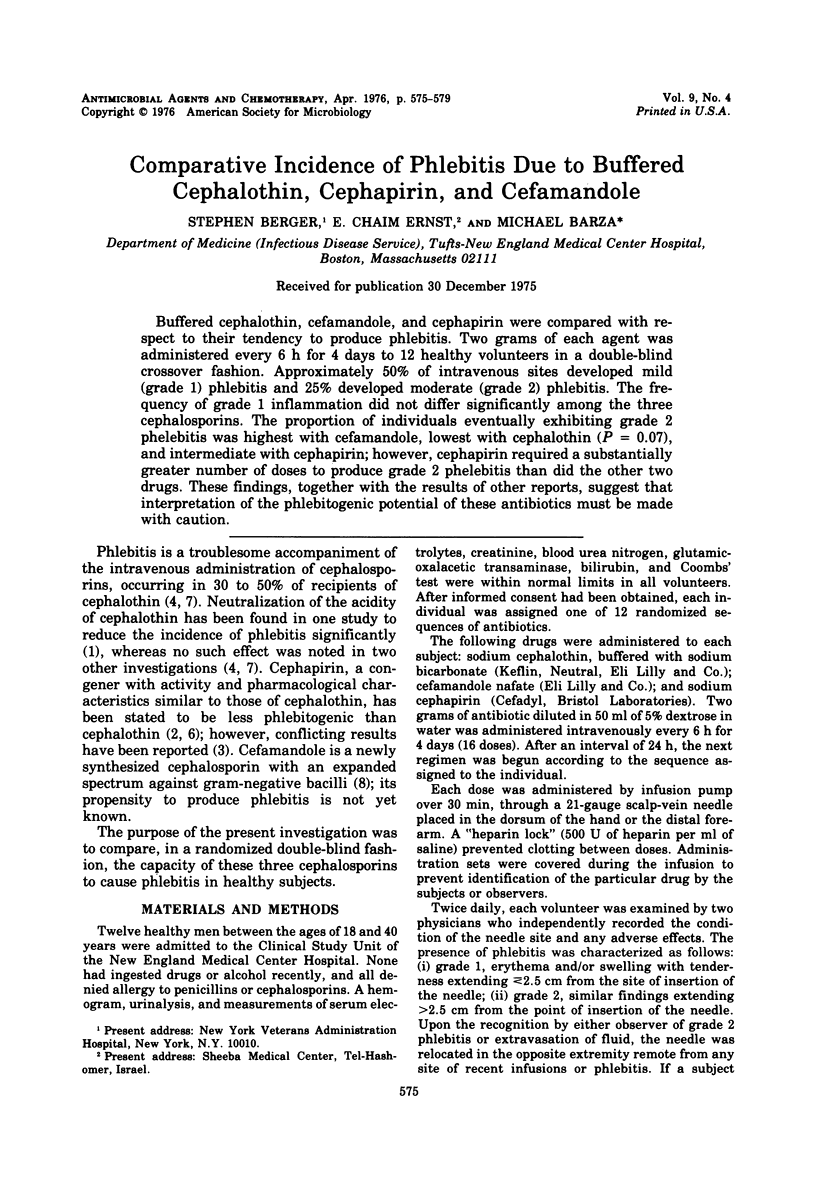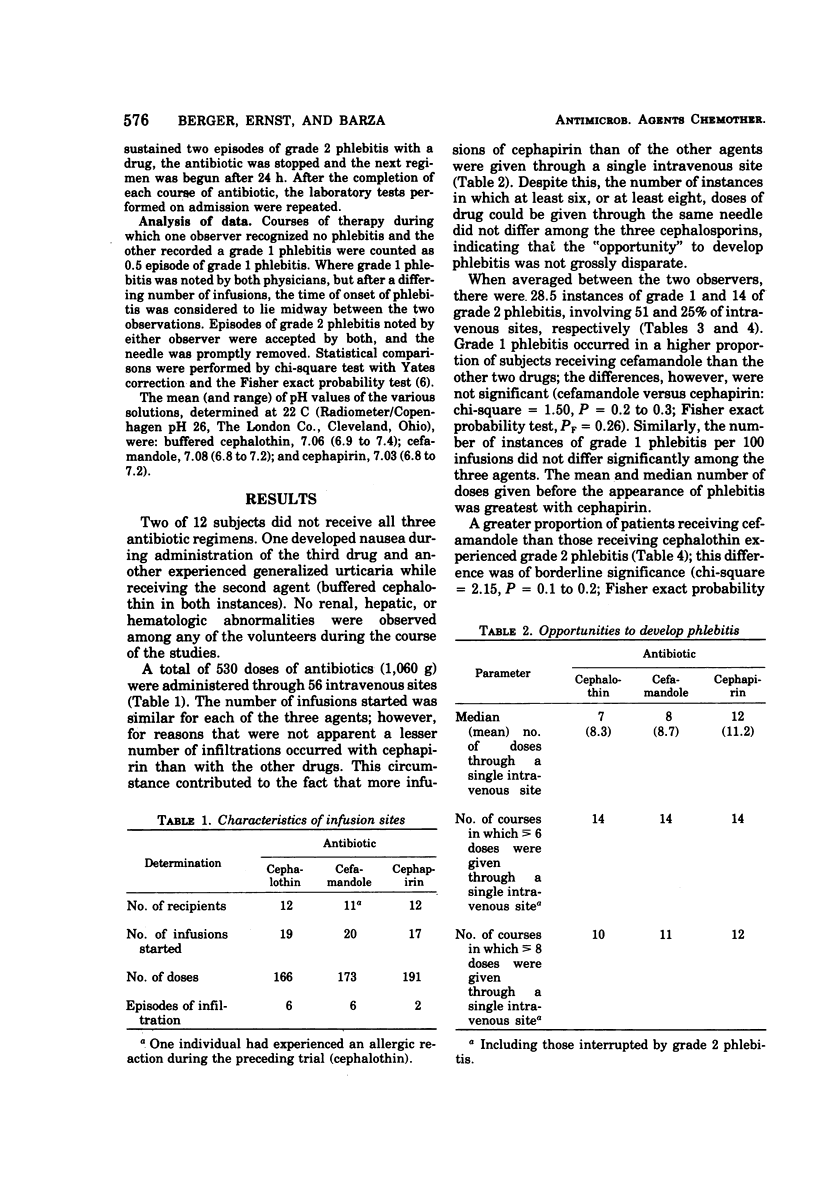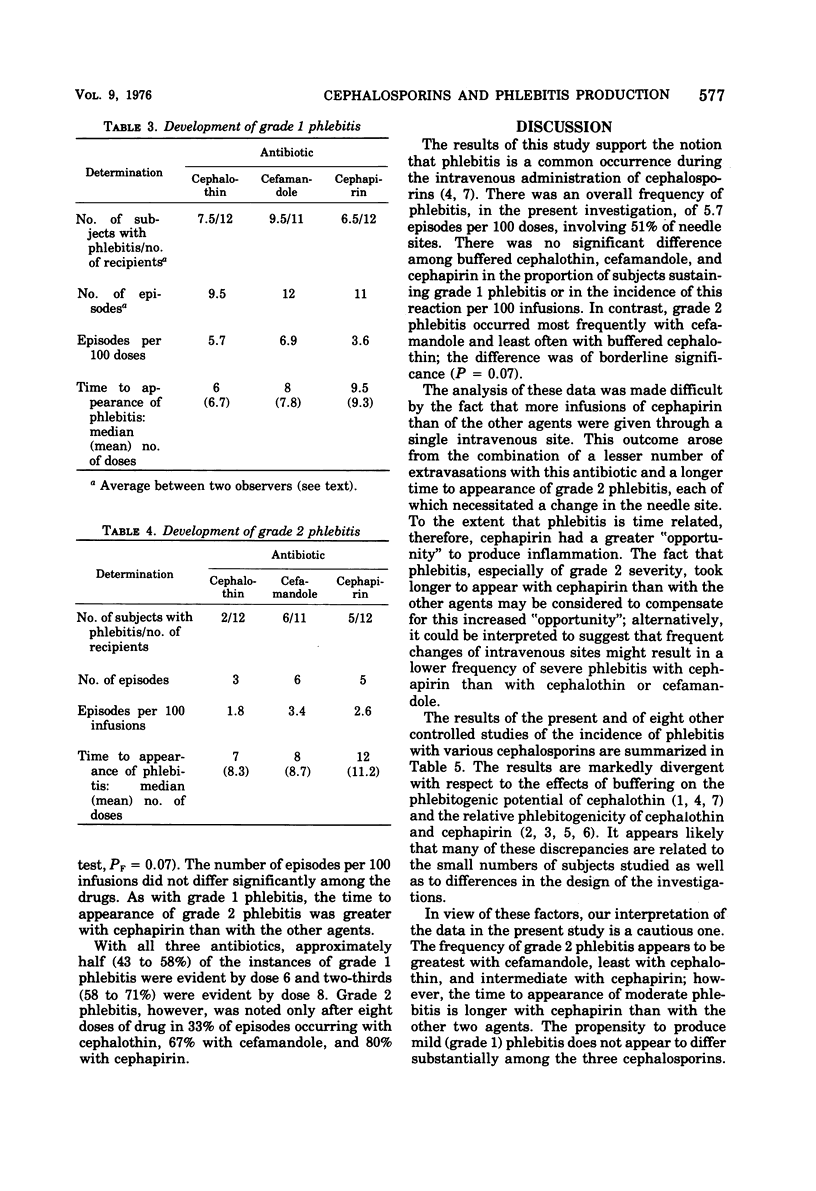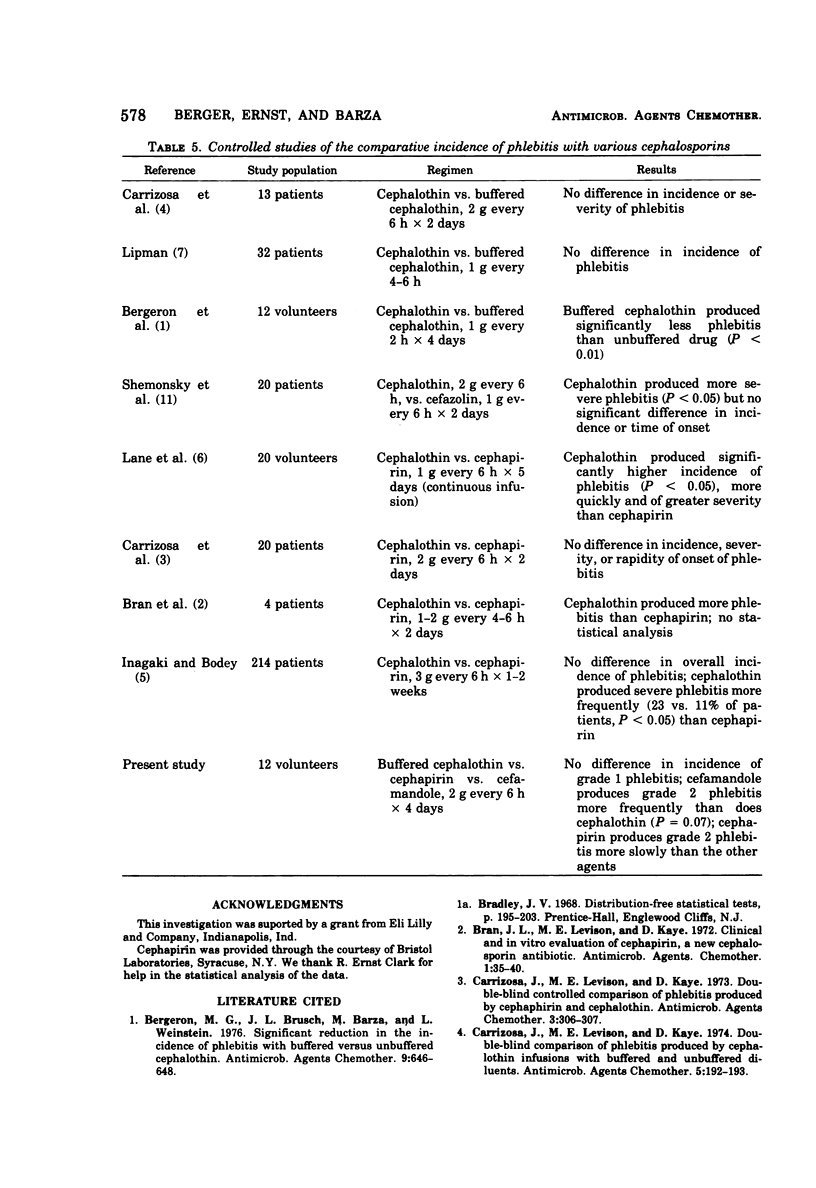Abstract
Buffered cephalothin, cefamandole, and cephapirin were compared with respect to their tendency to produce phlebitis. Two grams of each agent was administered every 6 h for 4 days to 12 healthy volunteers in a double-blind crossover fashion. Approximately 50% of intravenous sites developed mild (grade 1) phlebitis and 25% developed moderate (grade 2) phlebitis. The frequency of grade 1 inflammation did not differ significantly among the three cephalosporins. The proportion of individuals eventually exhibiting grade 2 phelebitis was highest with cefamandole, lowest with cephalothin (P = 0.07), and intermediate with cephapirin; however, cephapirin required a substantially greater number of doses to produce grade 2 phelebitis than did the other two drugs. These findings, together with the results of other reports, suggest that interpretation of the phlebitogenic potential of these antibiotics must be made with caution.
Full text
PDF




Selected References
These references are in PubMed. This may not be the complete list of references from this article.
- Bergeron M. G., Brusch J. L., Barza M., Weinstein L. Significant reduction in the incidence of phlebitis with buffered versus unbuffered cephalothin. Antimicrob Agents Chemother. 1976 Apr;9(4):646–648. doi: 10.1128/aac.9.4.646. [DOI] [PMC free article] [PubMed] [Google Scholar]
- Bran J. L., Levison M. E., Kaye D. Clinical and in vitro evaluation of cephapirin, a new cephalosporin antibiotic. Antimicrob Agents Chemother. 1972 Jan;1(1):35–40. doi: 10.1128/aac.1.1.35. [DOI] [PMC free article] [PubMed] [Google Scholar]
- Carrizosa J., Levison M. E., Kaye D. Double-blind comparison of phlebitis produced by cephalothin infusions with buffered and unbuffered diluents. Antimicrob Agents Chemother. 1974 Feb;5(2):192–193. doi: 10.1128/aac.5.2.192. [DOI] [PMC free article] [PubMed] [Google Scholar]
- Carrizosa J., Levison M. E., Kaye D. Double-blind controlled comparison of phlebitis produced by cephapirin and cephalothin. Antimicrob Agents Chemother. 1973 Feb;3(2):306–307. doi: 10.1128/aac.3.2.306. [DOI] [PMC free article] [PubMed] [Google Scholar]
- Inagaki J., Bodey G. P. Phlebitis associated with cephalosporins: cephapirin versus cephalothin. Curr Ther Res Clin Exp. 1973 Feb;15(2):37–43. [PubMed] [Google Scholar]
- Lane A. Z., Taggart J. G., Iles R. L. Relative incidence of phlebitis caused by continuous intravenous infusion of cephapirin and cephalothin. Antimicrob Agents Chemother. 1972 Sep;2(3):234–235. doi: 10.1128/aac.2.3.234. [DOI] [PMC free article] [PubMed] [Google Scholar]
- Lipman A. G. Effect of buffering on the incidence and severity of cephalothin-induced phlebitis. Am J Hosp Pharm. 1974 Mar;31(3):266–268. [PubMed] [Google Scholar]
- Neu H. C. Cefamandole, a cephalosporin antibiotic with an unusually wide spectrum of activity. Antimicrob Agents Chemother. 1974 Aug;6(2):177–182. doi: 10.1128/aac.6.2.177. [DOI] [PMC free article] [PubMed] [Google Scholar]
- Perkins R. L., Saslaw S. Experiences with cephalothin. Ann Intern Med. 1966 Jan;64(1):13–24. doi: 10.7326/0003-4819-64-1-13. [DOI] [PubMed] [Google Scholar]
- Rahal J. J., Jr, Meyers B. R., Weinstein L. Treatment of bacterial endocarditis with cephalothin. N Engl J Med. 1968 Dec 12;279(24):1305–1309. doi: 10.1056/NEJM196812122792403. [DOI] [PubMed] [Google Scholar]
- Shemonsky N. K., Carrizosa J. C., Kaye D., Levison M. E. Double-blind comparison of phlebitis produced by cefazolin versus cephalothin. Antimicrob Agents Chemother. 1975 Apr;7(4):481–482. doi: 10.1128/aac.7.4.481. [DOI] [PMC free article] [PubMed] [Google Scholar]
- TURCK M., ANDERSON K. N., SMITH R. H., WALLACE J. F., PETERSDORF R. G. LABORATORY AND CLINICAL EVALUATION OF A NEW ANTIBIOTIC--CEPHALOTHIN. Ann Intern Med. 1965 Aug;63:199–211. doi: 10.7326/0003-4819-63-2-199. [DOI] [PubMed] [Google Scholar]


